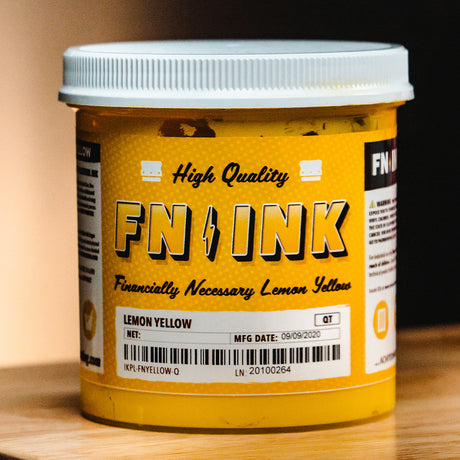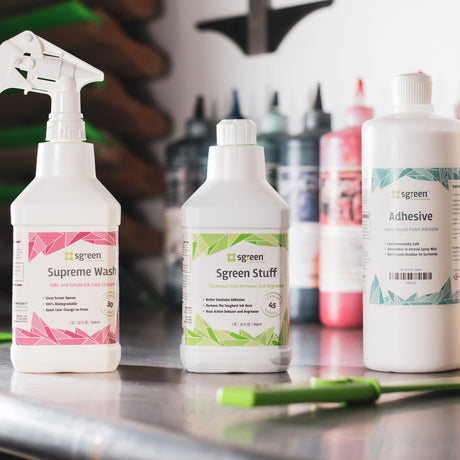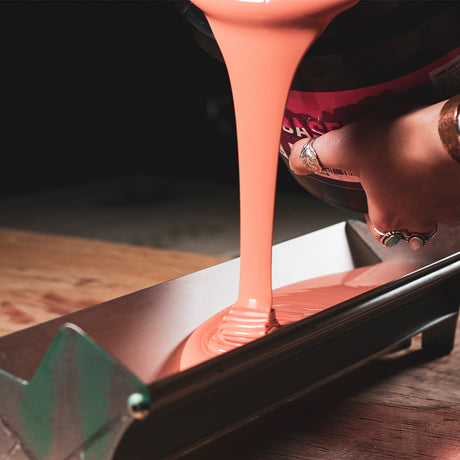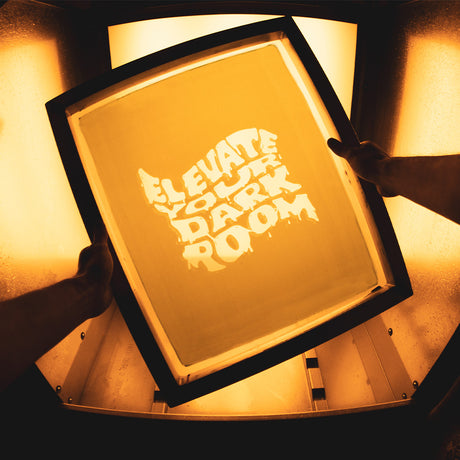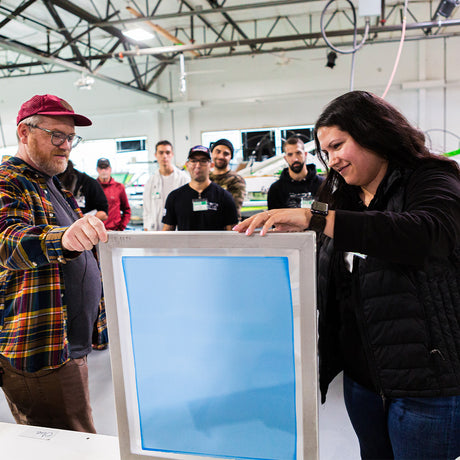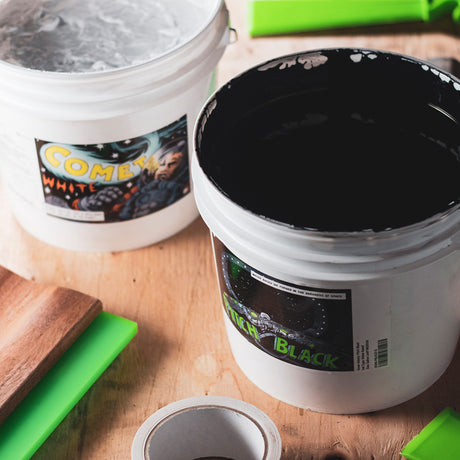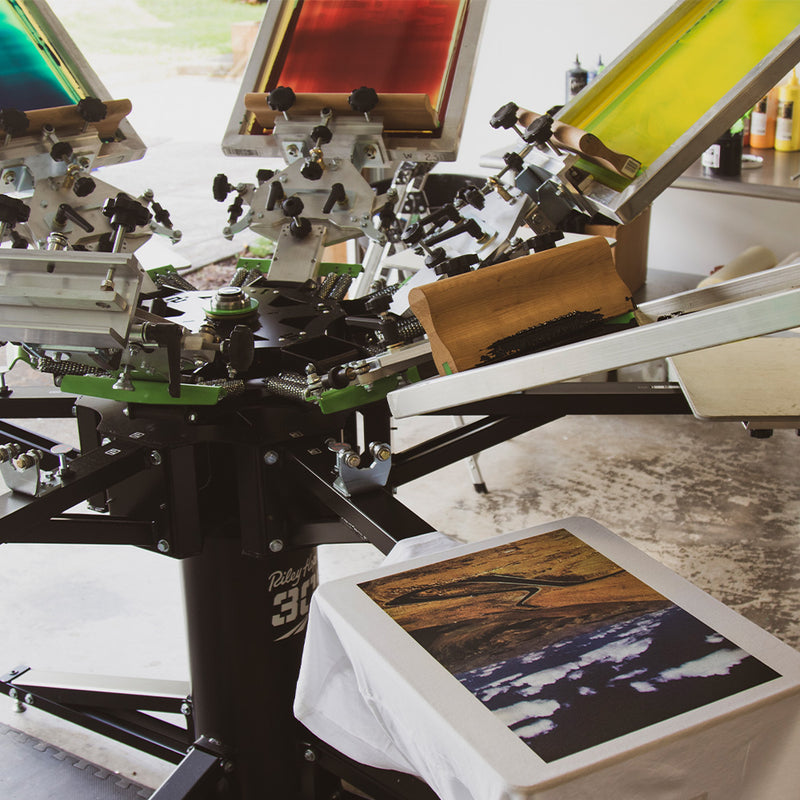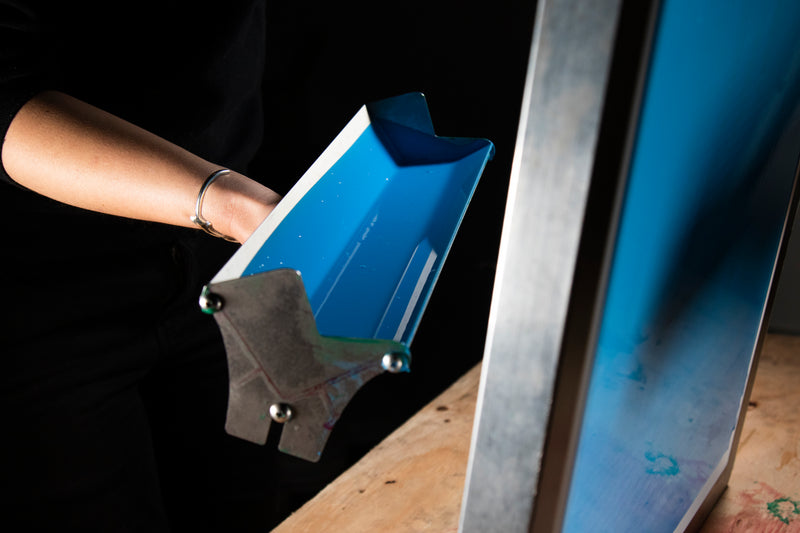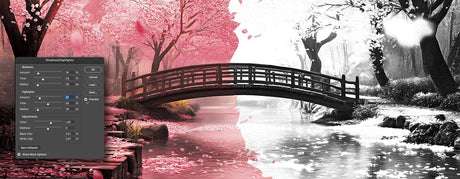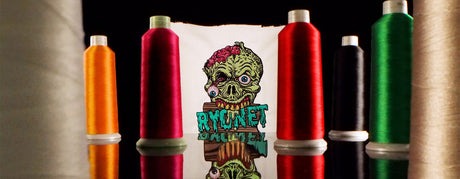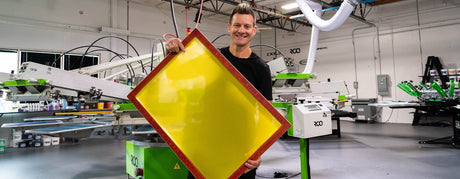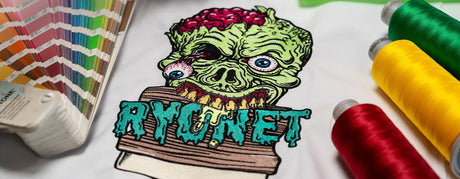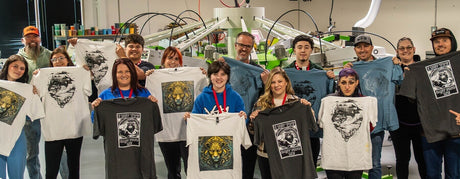Ryonet Discharge Base is designed to be used as either a mixing base for adding pigments to: for use as finished dischargeable ink color, or for use as an underbase to replace plastisol or HSA Water Based white ink.
Ryonet Discharge Base needs to be activated by Discharge Agent; which is a powder that is mixed into the discharge ink 4-6%. You should only activate as much ink as you will need to print at a given time, as it does have a lifespan of 6-8 hours once mixed. Your shops' ambient temperature can cause activated ink to have a shorter lifespan. The hotter it is, the quicker your ink will lose its charge.
Discharge ink can be used with most 100% cotton shirts. Not all dyes will react to discharge inks. Discharge will not remove the color from synthetic fabrics like Polyester or Nylon.
How Discharge Works and Proper Cure
Discharge agent is a compound molecule. That compound is Zinc Formaldehyde Sulfoxylate. The discharge process begins from high heat (either during flashing or curing) breaking apart the activator molecule. Once the activator is in its separate components, the formaldehyde attaches to the fabric dye and breaks the dye molecule. It's this process which removes the color from the garment you are printing on. However, not all dyes react well and are considered “nondischargeable”. So check with your garment manufacturer for a dischargeability rating chart.
After the garment dye is removed (this process happens at 250°F) you need to continue to heat up the ink layer and get a FULL cure of your entire ink layer. Water-based ink cures once the entire ink layer is at “cure temp” and it holds at that temp. 320°F is the target temperature here in the U.S. At this temp, you need to hold at or above 320°F for 20-30 seconds. If this means that you need to keep the garment in the dryer for 3 minutes to reach 320° and hold at or above that temp for 20-30 seconds, then that is how long you need to keep your shirt in the dryer to achieve a durable print.
At the end of the discharge process and during cure, the formaldehyde combines with the sulfur to create an inert molecule. As always, make sure you vent all air from the dryer to the outside. Some people have an itchy or swelling reaction when handling the discharge agent, what they are reacting to is the Sulfur in the activator. About 3% of the population have a sulfur allergy.
If you are unable to keep your shirt at those cure parameters, you can add Warp Drive to your ink. When you do this, you need to make sure that a FULL discharge of the garment happens. A full discharge of the garment only happens after you have removed all of the water in the ink and the ink reaches 250°F. So this is a great indicator that you have met all the parameters needed for the
Warp Drive to activate.
As always, test before running production.
EMULSION:
Screens must be coated with a water-resistant emulsion, we recommend using an emulsion like Baselayr Complete. For extended screen life and long print runs it is recommended to post expose the screens and/or use an emulsion hardener like Baselayr Hardener.
SQUEEGEE:
It is recommended to use a harder squeegee (70 duro or 70/90/70 duro) with discharge inks as you want to drive the ink into the garment. We do not want the ink to stay up on top of the fibers like with plastisol or HSA water-based inks like Green Galaxy.
MIXING:
Pigments: Maximum of 10% pigment loading into the discharge base. Do not add Activator until you have finished mixing up all the components of the ink. Activator is the last item to add.
Discharge Agent: Should be mixed at 4-6% by weight into the finished mixed ink.
PRINTING:
Discharge can be printed through mesh counts ranging from 60-350 mesh. However, it is recommended to print through 156-230 mesh (heavier ink deposits take far longer to cure, as there is a lot of water to evaporate). We want just enough ink printed into the shirt so that it can penetrate about halfway into the fabric. This gives you, the printer, the visual comfort that the ink layer looks solid and not uneven or splotchy.
Always finish your print stroke with a good heavy flood. Print with a squeegee angle between 15°- 25°. For big open spot colorwork, a heavier angle works well. For fine line and halftone work, a sharper angle is best. While there is no need to flash in between colors, you can do so if needed.
If printing discharge spot colors, it is recommended to print from the lightest color to the darkest color. Of course, you can change the order to whatever you need.
One thing to always note on with discharge inks. When you have achieved full cure of the garment, you will notice that the ink has a crispy feel to it. This is directly related to the amount of Discharge Activator in the ink. 1% activator will have a very light feel, while 6% will have a much heavier feel.
All of that will go away after the first wash cycle. You will also notice that the ink layer appears thinner after the wash. This is because there is a small amount of cured ink leftover on top of the fabric. After washing, all that is left is what has directly bonded into the fabric. This will be most noticeable if you are printing a discharge white.
As a direct result of the ink excess washing away. It is NOT recommended to print flash print any ink as you will see no benefit after the first wash. If a heavier, more saturated ink deposit is needed, either lower your mesh count or use a Thin Thread mesh to allow more ink to flow through the screen.
Using as an Underbase:
Follow the same print parameters as above, but flash the base layer dry. After flashing you will typically see a partial discharge of the garment, maybe more depending on how hot your platens have gotten and/or how long you have left the garment under the flash. Proceed to print the rest of your design as normal.
You will notice that you can now print more colors wet on wet when compared to printing over a plastisol or HSA water-based ink. Because of this, you may be able to reduce the number of flashes needed.
WE STRONGLY SUGGEST WASH TESTING AND DOCUMENTING CURE TIMES BEFORE BEGINNING PRODUCTION
CLEAN UP:
Card off excessive ink and dispose of according to local regulations. Use Sgreen Aqua Wash to help with cleaning up any thick or dried up ink. You can finish with plain water to wipe off any final residue.
PRODUCT DATA SHEET






